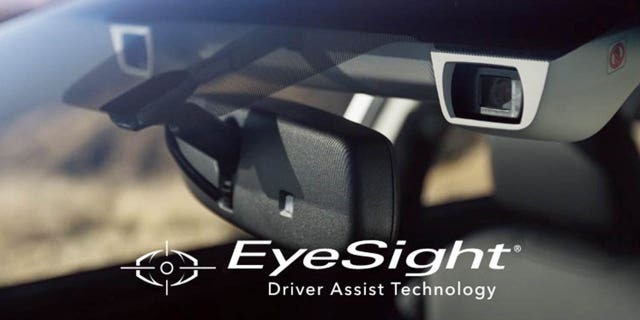The National Highway Traffic Safety Administration (NHTSA) is looking to put the brakes on pedestrian deaths.
The federal safety agency is proposing new rules that would mandate automatic emergency braking systems in all new vehicles within three years.
Automakers entered a voluntary agreement to add the technology to their fleets in 2016 and it is already equipped in 90% of passenger vehicles.
The new rules would increase the speeds at which they operate and also require pedestrian detection capability in light duty models.

IIHS evaluates automatic emergency braking systems. (IIHS)
NHTSA estimates that the feature’s availability will save 360 lives and reduce injuries by at least 24,000 each year. An official testing protocol that includes measures to mitigate so-called “phantom braking” events, which is when a vehicle applies the brakes for no apparent reason, will be developed.
“Pedestrian AEB that works well at night is a game changer for protecting the most vulnerable people on the road,” said David Harkey, president of the Insurance Institute for Highway Safety (IIHS), an organization that provides crash test ratings for new vehicles. “This proven technology takes action when a driver doesn’t and can reduce the severity of a collision or prevent the collision from happening altogether.”

Subaru’s EyeSight automatic emergency braking system uses stereoscopic cameras. (Subaru)
The new standards will require the systems to detect pedestrians at night, which is when three-quarters of such crashes occur, according to IIHS. Recent tests by the organization found that only a handful of current models have systems that perform well in low-light situations and some hardly work at all.
CLICK HERE TO SIGN UP FOR THE FOX NEWS AUTOS NEWSLETTER
“For a vehicle to be named one of Consumer Reports’ top picks, it has to come with automatic emergency braking with pedestrian detection as standard equipment, and the braking system has to operate at highway speeds,” William Wallace, Consumer Reports’ associate director of safety policy, said.
“We’ve seen an increase each year in the number of vehicles that offer the technology, but ultimately these federal requirements would ensure every new car comes with this proven safety feature – without consumers being forced to pay extra for an expensive option package.”

